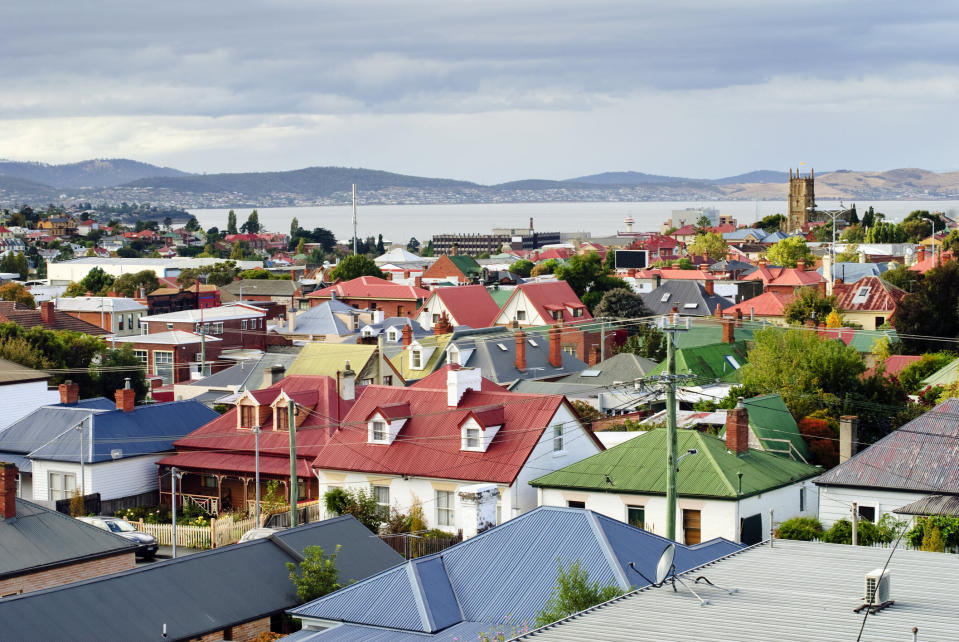What will it take to fix homelessness in Australia?

It’s a difficult problem: Australians are the wealthiest people in the world, with a median adult wealth of $264,903, but homelessness is growing.
Much of Australia’s wealth is tied up in property, but as the property market soared to new heights, housing affordability decreased accordingly, with one international study branding all capital city markets in Australia “severely unaffordable”.
At the same time, little social housing or even purpose-built affordable housing has been built in the last decade as investors shy away from lower returns and a perceived higher risk. Other public housing options - like the Gatwick in St Kilda - have even shut, with the land sold off.
The fact is, there’s just not enough affordable housing stock for Australia’s lowest 9 per cent of income earners.
It means that while Australia has enjoyed 28 years of economic growth, homelessness has increased by 14 per cent in the years between 2011 and 2018. Tent cities in Sydney, Melbourne and Hobart attest to that.
And this week, the family and friends of a Melbourne woman without a fixed address, Courtney Herron attended her funeral after she died in a brutal attack, allegedly perpetrated by another man with no fixed address.
So, what can be done?
One:
According to Professor Hal Pawson from the University of New South Wales City Futures Research Centre, the first step is for governments to address rough sleeping - the worst form of homelessness.
Homelessness includes being without a fixed address and staying at friends’ for periods of time, sleeping in a vehicle or homeless shelter, but rough sleeping means sleeping with no shelter.
“On any given night in Australia there are at least 8,000 people sleeping rough – a number which increased by 20 per cent between 2011 and 2016,” he told Yahoo Finance.
“A proportion of the rough sleeper population involves people who have been living on the streets for some time. Australian governments need to fund more ‘assertive outreach’ to assist this group. Many of those concerned have support needs, some of which may be enduring, some of which may be temporary.”
He explained that while providing affordable rental housing to rough sleepers will reduce the visible problem, it also won’t fix it as there will still be a constant flow of Australians joining the homeless population.
And that’s why more ambitious policies are necessary.
Two:
The second step is to minimise the number of Australians being made homeless - particularly Australians who have just left prison, the army or foster care.
Related story: The welfare program leading single parents into poverty
“Greater obligations need to be placed on all of these institutions to take responsibility for exiting ex-offenders, young people and service personnel.”
Three:
The largest priority is for governments to increase the supply of affordable rental housing, or at the very least ensure that the amount of social housing grows at the same rate as the population - something that hasn’t happened for the last 20 years.

“As you’ll see from our ‘Australian Homelessness Monitor’ report, that is far from being achieved,” Pawson warned.
“Action can also be taken to reduce the risk of homelessness from private rental housing by strengthening renters rights as in the recently enacted reforms to private renting in Victoria.”
Related story: Australia’s most unaffordable city for renters named
But it doesn’t end there.
Australia needs to consider whether social security benefit rates including NewStart and Rent Assistance should be increased, Pawson said, noting that they’re currently so low “tens of thousands of claimants are put at risk”.
Are we close to getting there?
Homelessness advocacy campaign, Everybody’s Home warns current and planned levels of funding are not enough to solve the problem.
Speaking following the release of the 2019-20 Federal Budget, campaign spokesperson Kate Colvin said the Coalition government had refused to acknowledge the crisis.
“While the Coalition announced a surplus tonight, it means little to those 116,000 people experiencing homelessness tonight.
“The Federal Government continues to prop up the property sector with $11.8 billion in tax breaks but there’s nothing for ordinary Australians and renters who just want a home,” she continued.
“It’s appalling that the government knows that there will be 116,000 people experiencing homeless tonight and yet they have still chosen to favour property investors with negative gearing and capital gains tax concessions.”
The campaign called on Prime Minister Scott Morrison and Treasurer Josh Frydenberg to wind back negative gearing concessions and funnel those budget savings into 500,000 social and affordable rental properties, in addition to increasing Commonwealth Rent Assistance by $20 a week.
Analysis by the Australian Housing and Urban Research Institute also found a growth in the rate of homelessness is linked to areas with higher median rents and less affordable private rental housing, like Sydney, Hobart and Melbourne.
And, Professors Rachol Ong ViforJ and Gavin Wood from Curtin and RMIT University added, traditional housing affordability strategies are also hamstrung in the face of Australia’s large property investor cohort.
In a piece for The Conversation, the researchers explained that traditional housing supply strategies envision property owners successively moving out of cheaper property and into more expensive property, leaving their first property vacant and available.
“Deregulation of Australian financial markets and tax concessions have combined to make residential property an attractive investment, especially for higher-income households. So a higher-income earner would gain an additional property rather than swapping one for the other and leaving the vacated one affordable for the next in line.
“And if a substantial share of new housing is being purchased as holiday homes or investments, this can stifle the trickle down of affordable housing opportunities.”
Make your money work with Yahoo Finance’s daily newsletter. Sign up here and stay on top of the latest money, property and tech news.

 Yahoo Finance
Yahoo Finance 
